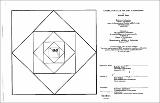Under(lining) Leh : the order of consciousness
Author(s)
Bagai, Radhika
DownloadFull printable version (43.53Mb)
Alternative title
Underlining Leh : the order of consciousness
Other Contributors
Massachusetts Institute of Technology. Department of Architecture.
Advisor
Imre Halasz.
Terms of use
Metadata
Show full item recordAbstract
"Because it is beautiful, there must be a formal order." - Leonardo Da Vinci. The thesis is an investigation into the idea that nothing built evolves naturally, that there is an explicit or implicit structure and an order to things. This order may be a result of clear intentions or of a collective consciousness, even behind forms that appear spontaneous. The city too is not immune from the order of a deep structure. The thesis concerns the 17th century city of Leh, situated in the captivating, but remote, region of Ladakh in India. The royal citadel of Leh is a dramatic example of the genius deployed in the conception of the settlement as a unified, complete, and highly evolved entity. It lends credibility to the idea that form is a highly controlled and meaningful expression of content (culture). The logic and consistency that I found in Leh's settlements could only mean one thing: that there was a "method to the madness", that there was an order to the disorder, that there was in fact a "jewel in the lotus". A fragment of the city was selected for an exploration which consists of an extensive survey resulting in a documented, original set of drawings. These original drawings and information gathered over a period of three months served as a resource for the exploration which uncovers some underlying orders in the city. The form of Leh is highly organized, where the source is not the drawing board but a consciousness among the people which exists as embedded, non-cognitive ideas about life, manifest in a clear physical form and order. The selected foci consists of five normative elements which are found to be relevant at the macro, as well as, the micro level. These are: 1. Hierarchy 2. Position and Direction 3. Assemblage 4. Generic Dimensions and Geometry 5. Invocation of Light The exploration reveals how these abstract normative elements translate into concrete design principles.
Description
Thesis (M. Arch.)--Massachusetts Institute of Technology, Dept. of Architecture, 1994. Includes bibliographical references (p. 75).
Date issued
1994Department
Massachusetts Institute of Technology. Department of ArchitecturePublisher
Massachusetts Institute of Technology
Keywords
Architecture.